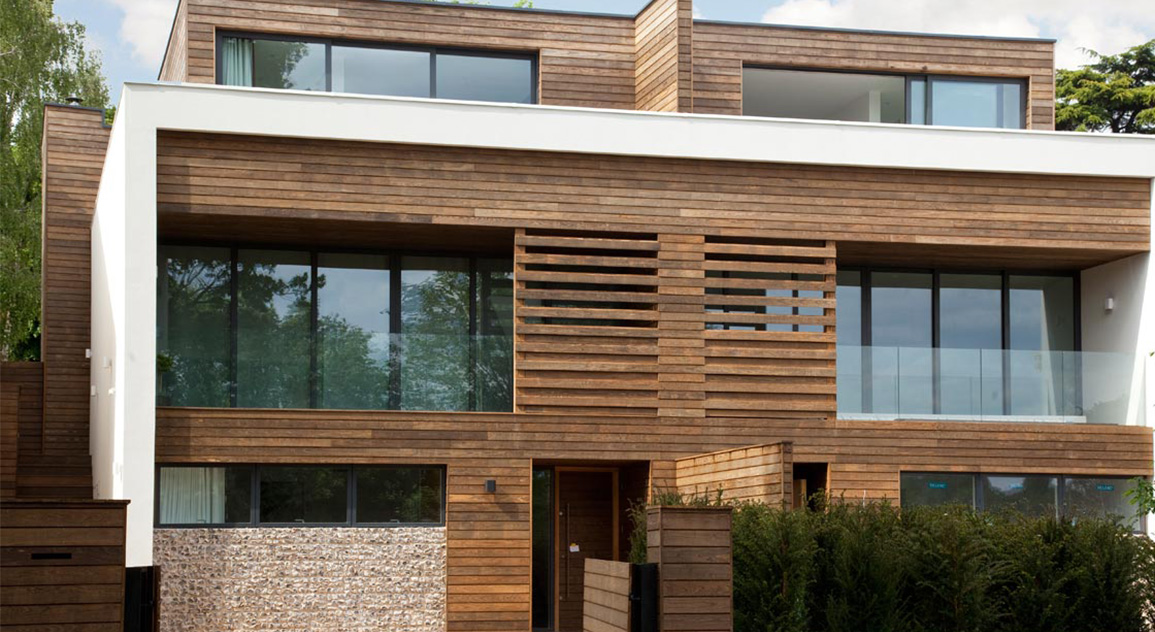Things to Know About Wood Cladding

Wooden cladding is a complex procedure that entails decking the exteriors of any building or structure with a covering of quality materials that provide thermal insulation and resistance from harsh climatic conditions. This outer surface frequently determines how elements strike or fall on a substrate. Cladding panels have an advantage over other solutions in that they provide additional protection to the structure, as well as being a low-maintenance, non-combustible, and environmentally friendly option that meets your decorative demands.
When utilized as an exterior cladding option on external walls, wood cladding offers several advantages. To begin with, wood is naturally gorgeous, evoking a warm and earthy impression. Every plank of wood has a distinct appearance, that has its own color and grain texture. Wooden cladding comes in an infinite number of colors and textures, as well as a variety of finishing possibilities. Furthermore, wood is a light material that may be readily changed, repainted, or stained during the course of its life as a construction material.
Timber cladding is extremely popular as an outside cladding solution due to its environmental friendliness. It is highly robust, totally biodegradable, and 100% renewable as a material. Wood cladding is widely utilized and encouraged in the green construction business and movement due to its sustainable features. There are several forms of wood cladding. Timber softwoods are one of the most frequent forms of wood cladding. One important feature of these types of wood cladding is that they do not require preservation treatment to achieve high durability against rotting and weather. Hardwoods, such as oak, are inherently sturdy, robust, and long-lasting to the elements.
Thermally adapted wall wood cladding is a modern method of cladding. In this scenario, wood is heated to eliminate moisture in order to increase durability and stability as an external cladding material. Wood cladding is a conventionally beautiful cladding option that is also one of the most adaptable and positive cladding alternatives available today. It’s simple to see why this extremely natural cladding material is so popular and appealing.
Lets take a look at different types of wood cladding:
- IPE Cladding: IPE, often known as Brazilian walnut, is a stunning South American exotic wood. Structures made of IPE wood are durable, strong, and naturally resilient to decay, abrasion, moisture, and bugs. It is about twice as thick and up to 5 times tougher than other woods. It is medium to dark brown in colour, similar to mahogany, and has the elegance of a stylish modern wood in addition to lasting a long period. IPE wood timber has grown in popularity as a low-cost alternative to teak wood. IPE Wood Lumber is commonly used for decking as well as other outdoor uses such as furniture, paneling, and fence. It has an exceptionally extended outdoor life. It has a life expectancy of more than forty years in practically all applications that can last up to 100 years. That is 4-7 times the lifespan of conventional pressure-treated woods. If you want to construct something that will last for a long time, IPE is an excellent choice.
- Thermoash Cladding: The name “thermoash wood” refers to the heat treatment procedure that wood undergoes to improve its strength and longevity, making it an appropriate hardwood for outdoor usage. The thermoash wood is completely natural and devoid of resin and toxins. Thermowood is manufactured without the use of any chemicals. Thermowood materials are particularly suited to applications facing adverse weather conditions due to their higher decay resistance.
- Cumaru Cladding: Search no farther than Red Floor India’s Cumaru cladding for high-quality timber items. This tropical wood is native to Southern America and is inherently long-lasting, making it an excellent choice for wood cladding. The yellowish-brown hue of the timber can be treated and stained or let to fade organically with the environment. If left untreated, it will age to a lovely silvery-grey tarnish.


